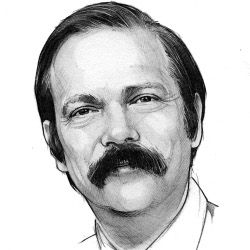
The Kansas City Federal Reserve Bank’s symposium in Jackson Hole, WY, is one of the world’s most watched economic events. Focusing on important economic issues that face the global economy, the symposium brings together most of the world’s central bankers. The symposium attracts significant media attention and has been known for its ability to move markets.
While the most anticipated speakers at the 2014 meeting were Janet Yellen, chair of the Board of Governors of the Federal Reserve System, and Mario Draghi, president of the European Central Bank, it was a talk by David Autor, an MIT labor economist that attracted a significant level of attention. Autor presented his paper, "Polanyi’s Paradox and the Shape of Employment Growth." The background for the paper was the question discussed in the July 2013 Communications editorial: Does automation destroy more jobs than it creates? While the optimists argue that though technology always destroy jobs, it also creates new jobs, the pessimists argue that the speed in which information technology is currently destroying jobs is unparalleled.
Based on his analysis of recent labor trends as well as recent advances in artificial intelligence (AI), Autor concluded, "Journalists and expert commentators overstate the extent of machine substitution for human labor. The challenges to substituting machines for workers in tasks requiring adaptability, common sense, and creativity remain immense," he argued. The general media welcomed Autor’s talk with a palpable sense of relief and headlines such as "Everybody Relax: An MIT Economist Explains Why Robots Won’t Steal Our Jobs." But a careful reading of Autor’s paper suggests that such optimism may be premature.
Autor’s main point in the paper is that "our tacit knowledge of how the world works often exceeds our explicit understanding," which poses a significant barrier to automation. This barrier, known as "Polanyi’s Paradox," is well recognized as the major barrier for AI. It is unlikely, therefore, that in the near term, say, the next 10 years, we will see a major displacement of human labor by machines. But Autor himself points out that contemporary computer science seeks to overcome the barrier by "building machines that learn from human examples, thus inferring the rules we tacitly apply but do not explicitly understand." It is risky, therefore, to bet we will not make major advances against Polanyi’s Paradox, say, in the next 50 years.
But another main point of Autor’s paper, affirming a decade-old line of research in labor economics, is that while automation may not lead to broad destruction of jobs, at least not in the near term, automation is having a major impact on the economy by creating polarization of the labor market. Information technology, argues Autor, is destroying wide swaths of routine office and manufacturing jobs. At the same time, we are far from being able to automate low-skill jobs, often requiring both human interaction and unstructured physical movement. Furthermore, information technology creates new high-skill jobs, which require cognitive skills that computers cannot match. Projections by the U.S. Bureau of Labor Statistics show continued significant demand for information-technology workers for years to come.
The result of this polarization is a shrinking middle class. In the U.S., middle-income jobs in sales, office work, and the like used to account for the majority of jobs. But that share of the labor market has shrunk over the past 20 years, while the share of high-end and low-end work expanded. Autor’s data shows this pattern—shrinkage in the middle and growth at the high and low ends—occurred also in 16 EU countries.
The immediate outcome of this polarization is growing income and wealth disparity. "From 1979 through 2007, wages rose consistently across all three abstract task-intensive categories of professional, technical, and managerial occupations," noted Autor. Their work tends to be complemented by machines, he argued, making their services more valuable. In contrast, wages have stagnated for middle-income workers, and the destruction of middle-income jobs created downward pressure on low-income jobs. Indeed, growing inequality of income and wealth has recently emerged as a major political issue in the developed world.
Autor is a long-term optimist, arguing that in the long run the economy and workforce will adjust. But AI’s progress over the past 50 years has been nothing short of dramatic. It is reasonable to predict that its progress over the next 50 years would be equally impressive. My own bet is on disruption rather than on equilibrium and adjustment.
Follow me on Facebook, Google+, and Twitter.
Moshe Y. Vardi, EDITOR-IN-CHIEF



Join the Discussion (0)
Become a Member or Sign In to Post a Comment